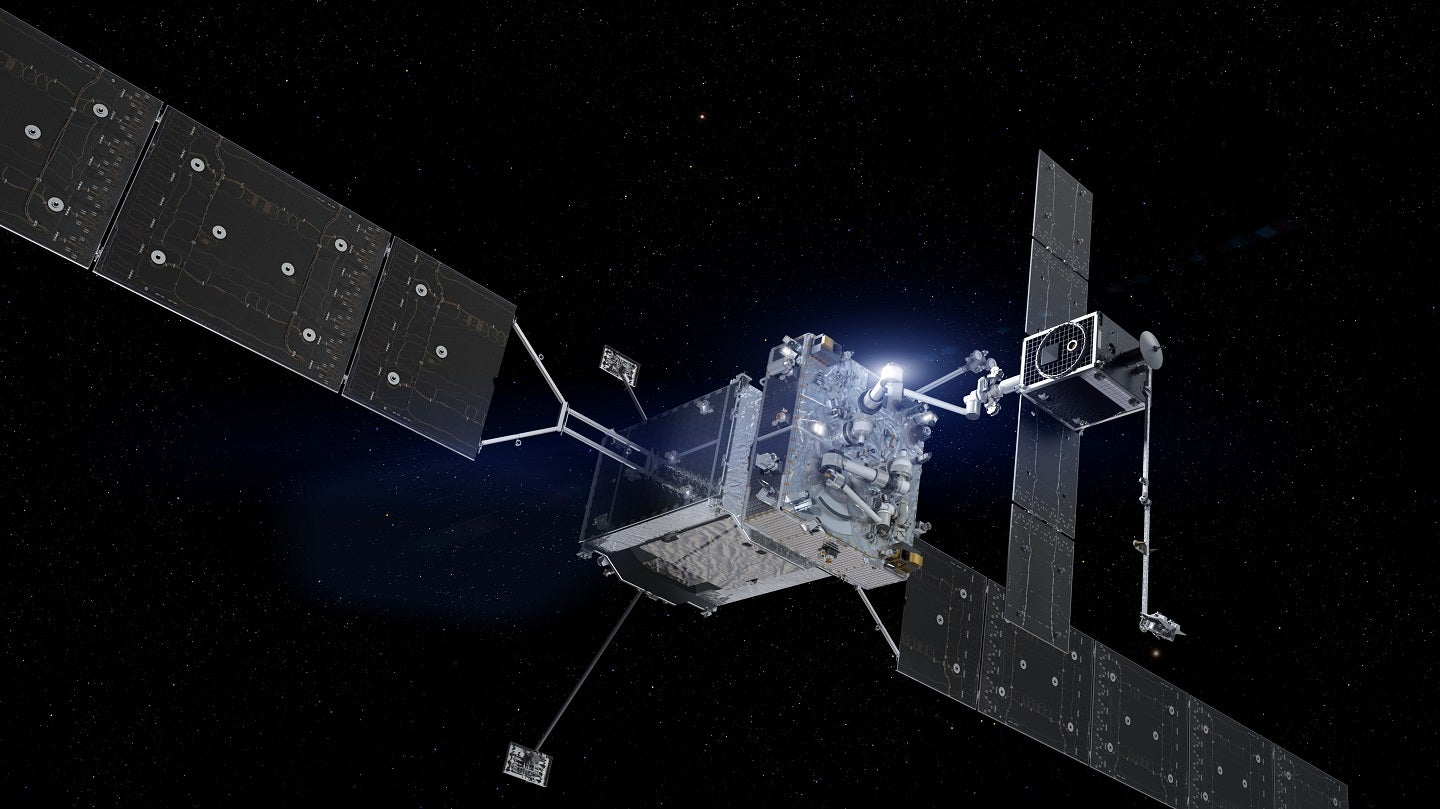
SpaceLogistics, a Northrop Grumman subsidiary, has sold its third Mission Extension Pod (MEP) – a propulsion “jet pack” that extends the life of legacy satellites in geosynchronus earth orbit (GEO).
Intelsat, a multinational satellite services provider, has agreed to purchase the MEP.
SpaceLogistics’ Mission Robotic Vehicle (MRV) – a servicing spacecraft equipped with robotic arms – will intsall the MEP on one of Intelsat’s communications satellites in GEO, extending its life by at least six years.
“This sale completes the launch manifest for our first tranche of MEPs and underscroes the demand for our services. SpaceLogistics will continue to deliver future MEPs to extend the life of client satellites while making space sustainable for all,” the President of SpaceLogistics, Rob Hauge, stated.
Both MRV and MEP have completed design reviews and are currently being built, integrated and tested ahead of a planned launch aboard a SpaceX Falcon 9 rocket in early 2025.
“Our space-servicing system helps satellite operators activate new markets, drive asset value and protect their franchises,” Hauge added.
How well do you really know your competitors?
Access the most comprehensive Company Profiles on the market, powered by GlobalData. Save hours of research. Gain competitive edge.

Thank you!
Your download email will arrive shortly
Not ready to buy yet? Download a free sample
We are confident about the unique quality of our Company Profiles. However, we want you to make the most beneficial decision for your business, so we offer a free sample that you can download by submitting the below form
By GlobalDataWhat’s the importance of satellite-servicing?
With the space domain becoming more contested and congested, we risk creating an unsustainable space environment with unusable legacy satellites and debris. As the domain rapidly evolves, the more technology will be used in orbit and the more problematic these systems will become.
Sustaining the life of these systems is one way to recycle existing systems in orbit.
According to Northrop Grumman’s website, its vision is to establish a fleet of commercial servicing vehicles in GEO that can address most any servicing needs. At the moment, the American prime works closely with US government agencies to develop next generationspace logistics technologies; these include robotics and high-power solar electric propulsion.
In 2020, the global robotics market was worth $45.3bn, according to GlobalData forecasts. By 2030, it will have reached $568.1bn, experiencing a 28.8% compound annual growth rate across the decade. Emerging areas using field robots include mining and space exploration. The robots that land on other planets to explore and collect information use technology similar to those that do the same in fields here on Earth.







